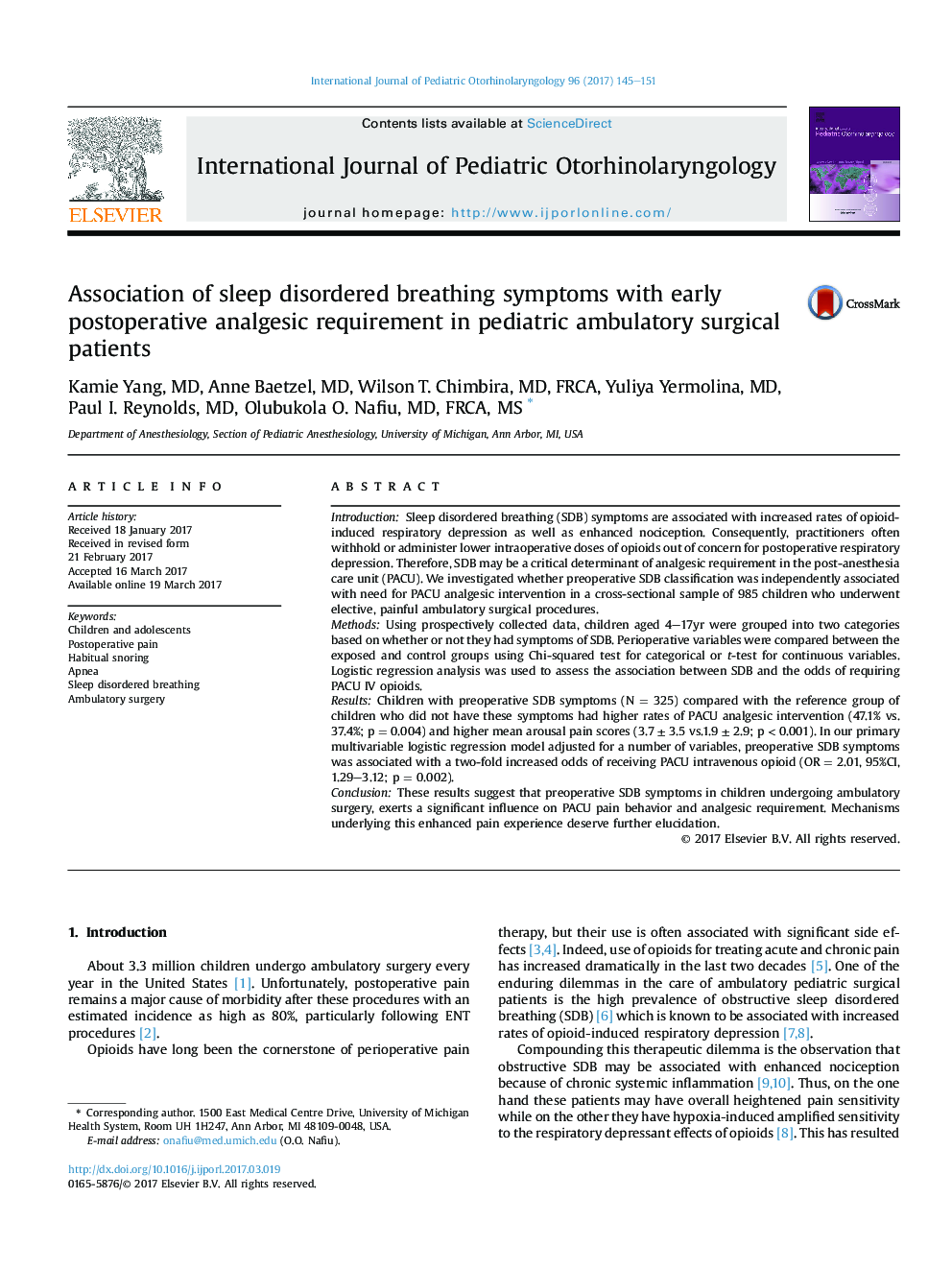| Article ID | Journal | Published Year | Pages | File Type |
|---|---|---|---|---|
| 5714782 | International Journal of Pediatric Otorhinolaryngology | 2017 | 7 Pages |
IntroductionSleep disordered breathing (SDB) symptoms are associated with increased rates of opioid-induced respiratory depression as well as enhanced nociception. Consequently, practitioners often withhold or administer lower intraoperative doses of opioids out of concern for postoperative respiratory depression. Therefore, SDB may be a critical determinant of analgesic requirement in the post-anesthesia care unit (PACU). We investigated whether preoperative SDB classification was independently associated with need for PACU analgesic intervention in a cross-sectional sample of 985 children who underwent elective, painful ambulatory surgical procedures.MethodsUsing prospectively collected data, children aged 4-17yr were grouped into two categories based on whether or not they had symptoms of SDB. Perioperative variables were compared between the exposed and control groups using Chi-squared test for categorical or t-test for continuous variables. Logistic regression analysis was used to assess the association between SDB and the odds of requiring PACU IV opioids.ResultsChildren with preoperative SDB symptoms (N = 325) compared with the reference group of children who did not have these symptoms had higher rates of PACU analgesic intervention (47.1% vs. 37.4%; p = 0.004) and higher mean arousal pain scores (3.7 ± 3.5 vs.1.9 ± 2.9; p < 0.001). In our primary multivariable logistic regression model adjusted for a number of variables, preoperative SDB symptoms was associated with a two-fold increased odds of receiving PACU intravenous opioid (OR = 2.01, 95%CI, 1.29-3.12; p = 0.002).ConclusionThese results suggest that preoperative SDB symptoms in children undergoing ambulatory surgery, exerts a significant influence on PACU pain behavior and analgesic requirement. Mechanisms underlying this enhanced pain experience deserve further elucidation.
